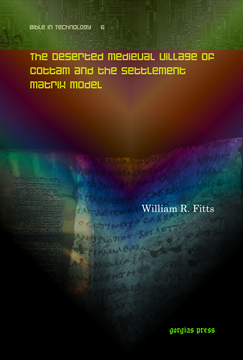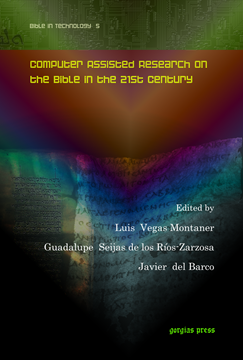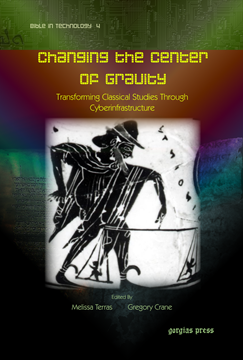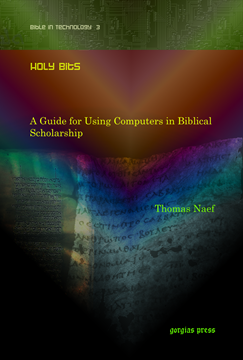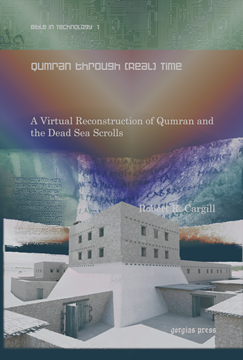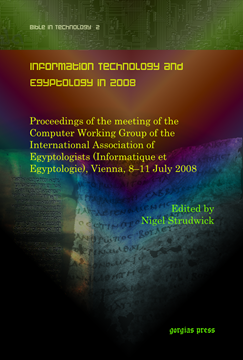Digital Technologies and the Ancient World
This series explores the intersection between the study of earlier societies, literature and computer technology within the broader context of digital humanities. Volumes include edited collections and monographs on the application of computer technology, such as databases, complex systems, 3D modelling, textual analysis systems, spatial models, and other digital technologies enriching the study of earlier societies and their material culture.
The Deserted Medieval Village of Cottam and the Settlement Matrix Model
ISBN: 978-1-61143-964-9
This volume introduces the concept of the Settlement Matrix, a heuristic model that connects the analysis of the symbolic and practical aspects of human culture by placing them both within the same spaces defined by a settlement and its support area. The settlement matrix model examines each venue of daily life from the house to the settlement to the field system as integral parts of a single cultural construct, the settlement matrix. By defining discrete spaces and a way to connect them, the settlement matrix model provides a way to combine technologies like GIS with current archaeological theory.
$164.00 (USD) $98.40 (USD)
Computer Assisted Research on the Bible in the 21st Century
ISBN: 978-1-60724-930-6
The application of computer technology to the edition and linguistic analysis of biblical texts has provided, in the last thirty years, advanced tools for research purposes as well as for teaching the Bible in the classroom. This discipline requires, nonetheless, a critical evaluation from a historical perspective, examining past and present achievements and failures. This collection of essays evaluates the current tools and considers what is needed to satisfy the increasing demand for software related to the biblical texts, and offers an overview of different trends in computer technology on the Bible.
$145.00 (USD) $87.00 (USD)
Changing the Center of Gravity
Transforming Classical Studies Through Cyberinfrastructure
Edited by Melissa Terras & Gregory Crane
ISBN: 978-1-60724-881-1
The essays in this volume reflect a new generation of classicists hunting for new methods to understand and to disseminate ancient texts, both to increase the body of published information about classical Greek and Latin and also to encourage these languages to play an increased role in the intellectual life of humanity. In discussing areas as diverse as teaching, citation, criticism, collaboration, epigraphy, geography, grammar, lexicography, and digitization, this volume demonstrates the new scope and potential in Digital Classics research.
$202.00 (USD) $121.20 (USD)
Holy Bits
A Guide for Using Computers in Biblical Scholarship
By Thomas Naef
ISBN: 978-1-60724-327-4
This book is an excellent resource for students, scholars, pastors and other people interested in biblical studies for their daily work at the computer. This book treats general interest subjects like hardware and networks, operating systems, word processors and others. The main focus is on subjects for biblical scholars like Unicode, bible software and websites. Each chapter ends up with a list of URLs for further information about the subject. An online up-to-date link list is available. It can be used as textbook as well as a reference work.
$130.00 (USD) $78.00 (USD)
Qumran through (Real) Time
A Virtual Reconstruction of Qumran and the Dead Sea Scrolls
ISBN: 978-1-60724-058-7
This book proposes a new occupation model for the remains of Khirbet Qumran, the site associated with the discovery of the Dead Sea Scrolls. Using the latest in virtual reality technology, the author reconstructs the site of Qumran and demonstrates that the site was initially built as a Hasmonean fortress, and was later expanded into a residence for a self-sufficient community responsible for the Dead Sea Scrolls.
$171.00 (USD) $102.60 (USD)
Information Technology and Egyptology in 2008
Proceedings of the meeting of the Computer Working Group of the International Association of Egyptologists (Informatique et Egyptologie), Vienna, 8–11 July 2008
Edited by Nigel Strudwick
ISBN: 978-1-60724-068-6
The Computer Working Group of the International Association of Egyptologists has been in existence since 1983. The group focuses on the efforts of Egyptologists to find creative and useful ways of using information technology to aid in the research and teaching of Ancient Egypt. This volume collects the 16 papers presented during the 2008 meeting on topics including databases, complex systems, 3D modelling, textual analysis systems, the uses of the internet for sharing photographs, and bibliography. This publication provides an essential snapsot of the present uses of IT in the study of Ancient Egypt.
$140.00 (USD) $84.00 (USD)

